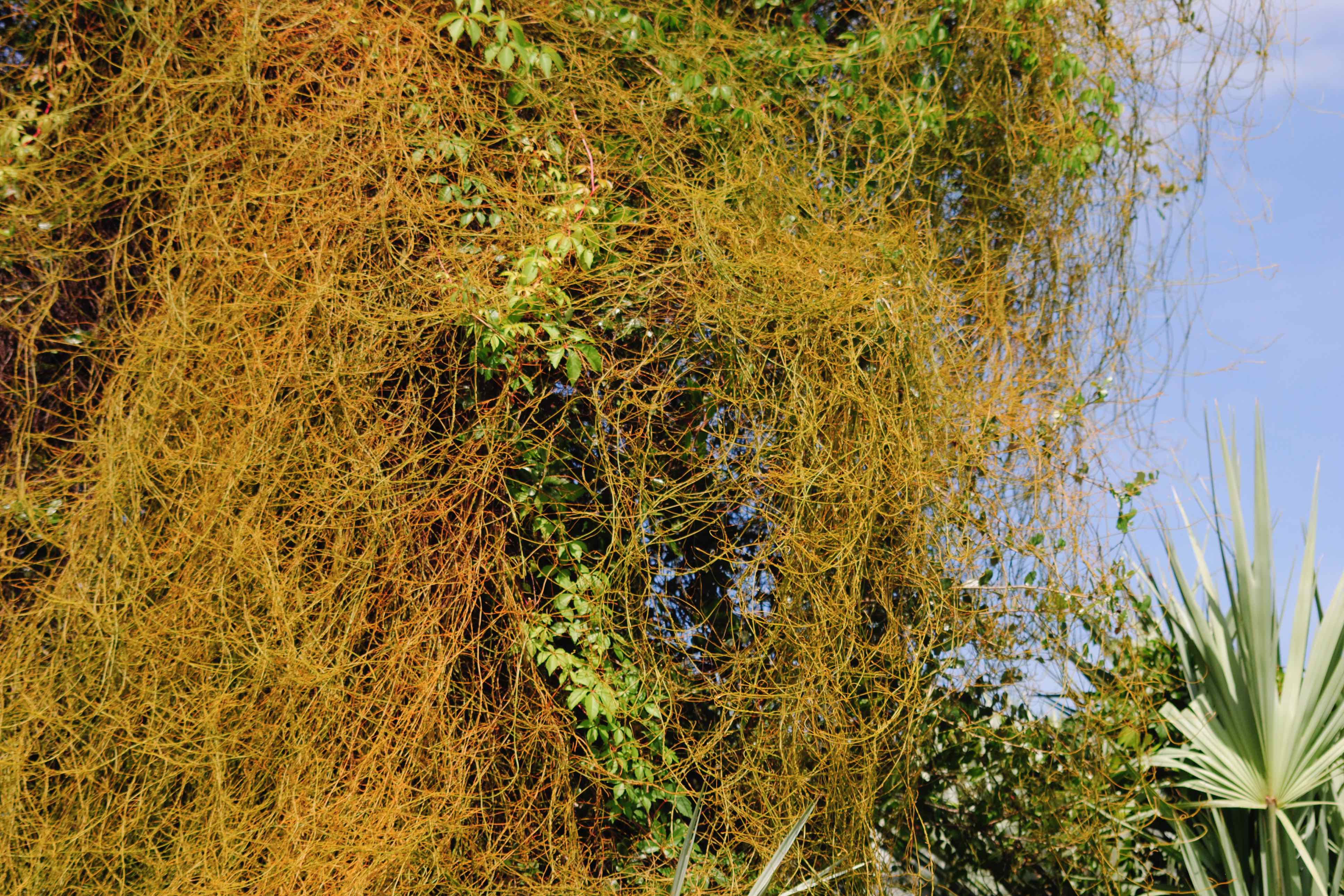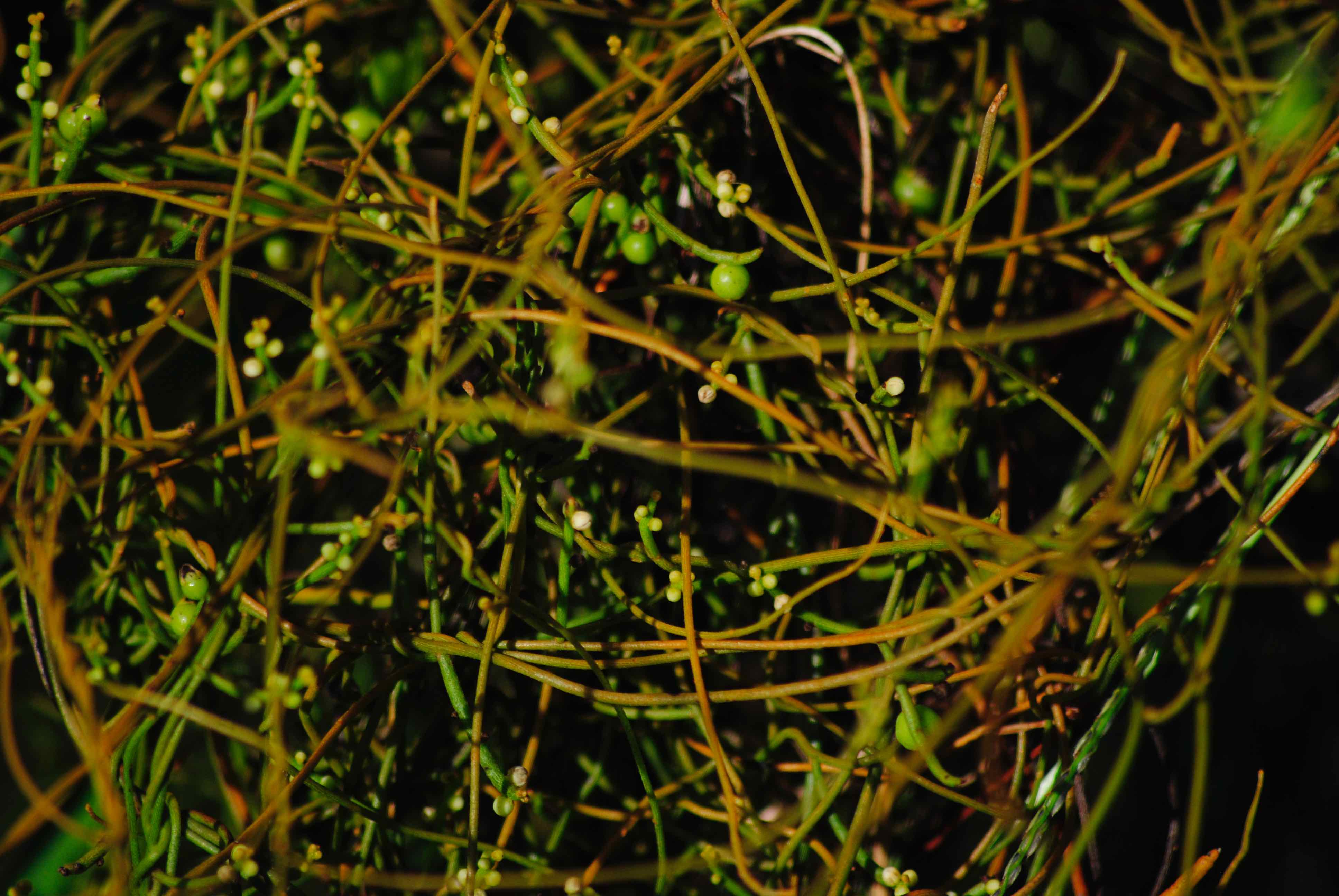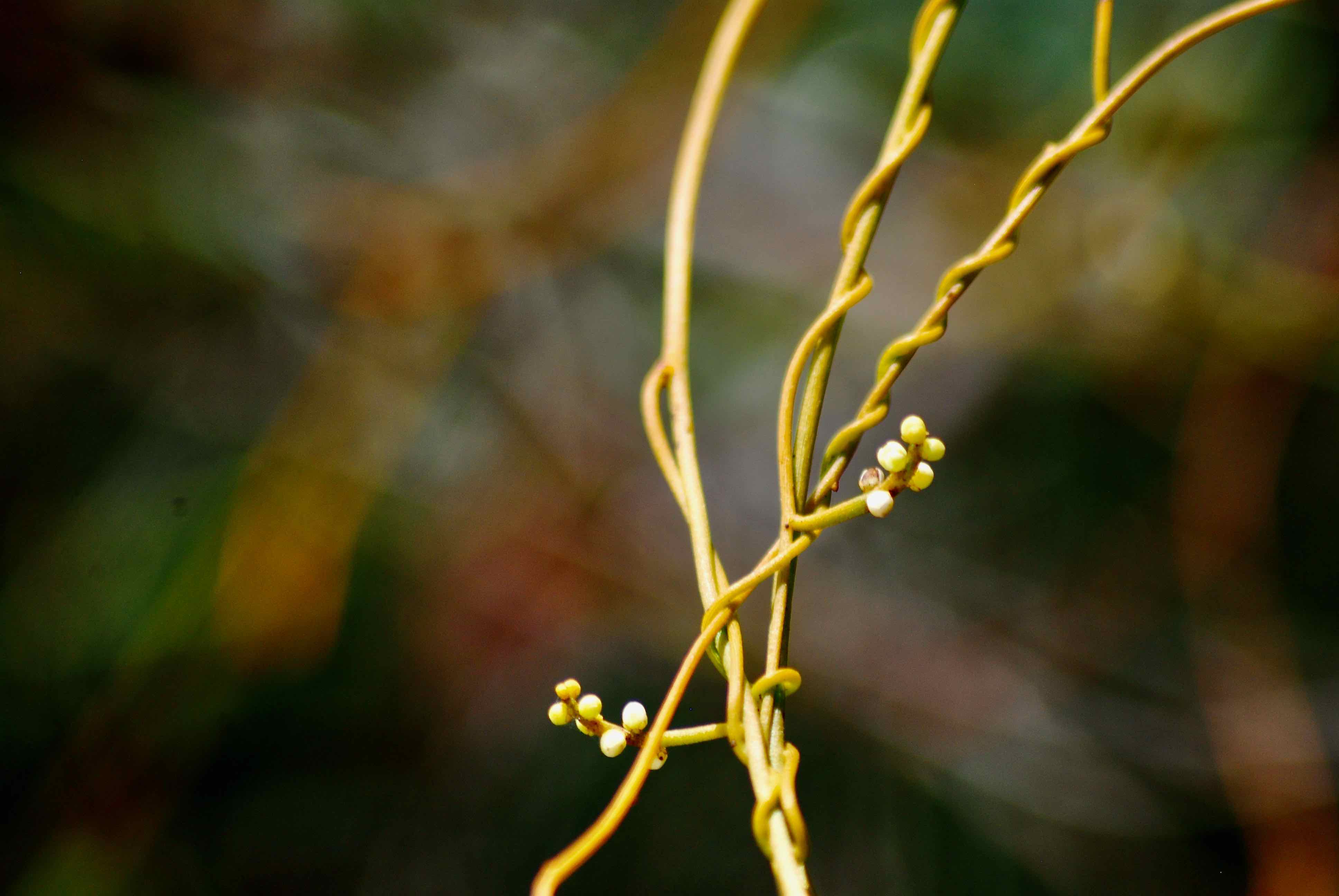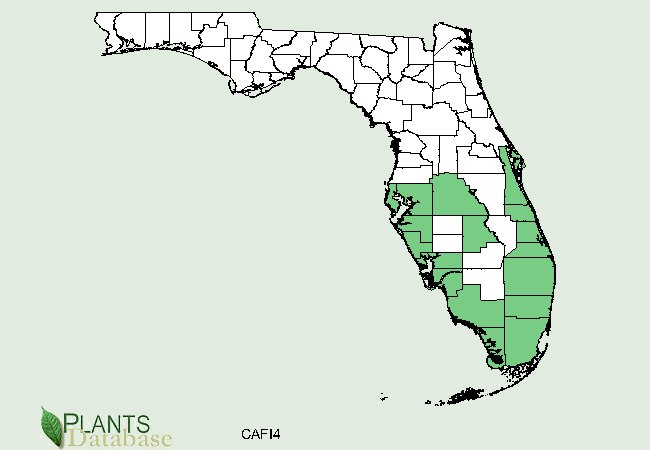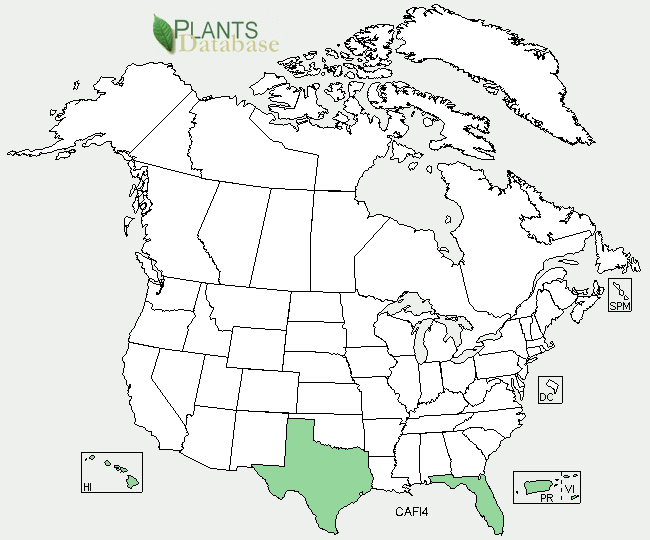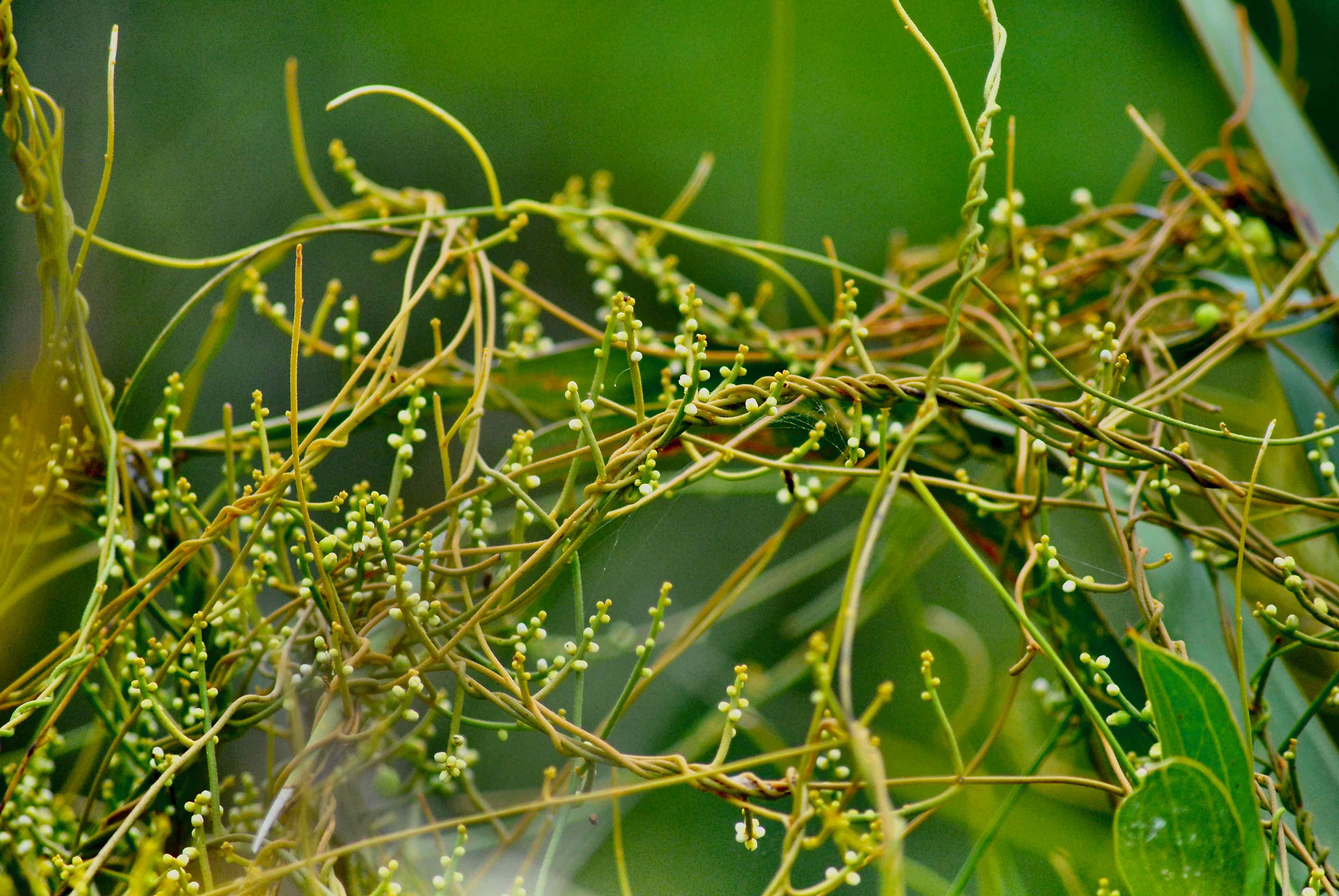
Love vine, photographed at Seacrest Scrub Natural Area, Boynton Beach, Palm Beach County, in July 2013.
Love vine, Cassytha filiformis, is one of the plant world's version of the vampire bat. It is a parasite that attaches itself to a host plant and sucks the life out of it.
Love vine doesn't necessarily kill its host, but it doesn't do it any favors, either. On the other hand, for some birds and us human types, love vine isn't so bad. In fact, it's downright useful in many ways.
It is native to Florida and found in scrubs and hammocks from the central part of the state southward. It's also found in Texas, Hawaii, Puerto Rico and the Virgin Islands, according to the U.S. Department of Agriculture. The Caribbean, Mexico, Central America, South America, Africa, Asia Australia and the Pacific are part of its range.
Love vine attaches itself to a host plant — usually a live oak — by twining its self around the branches. Love vine also has small appendages called haustoria that burrow into the host, pulling nutrients it can't produce on its own.
The odd thing is that love vine has substantial amounts of chlorophyll, the chemical responsible for photosynthesis — the process of turning sunlight and carbon dioxide into sugars. That would seem to indicate that love vine isn't totally dependent on a host for survival. But it's not clear whether love vine can produce its own food while relying on the host for water and minerals only or whether it steals everything.
It can kill the host, but as a parasite, that's self-defeating. If the host dies, so does love vine. In any regard, it does reduce the host's vigor and reproductive capacity. If sucking the life out of a plant isn't enough, love vine's thick mat reduces the amount of sunlight that hits its host.
Love vine does have leaves — about a milimeter long — and it does have flowers — those little white balls in the photo at the top and bottom right. It produces a berry-like fruit called a drupe — see the photo in bottom middle — that birds eat, helping to disperse the seeds. Sea currents also have contributed to love vine's huge native range. Stems can be 20 feet long.
Seeds must be scarified, or have their outer shell roughed up a bit, before they germinate, and there is a microbe in the soil that provides the service. On the other hand seeds can last years in the ground and still retain their potency if conditions aren't right for germination. Seedlings don't have a complete root system and must find and attach themselves to a host within a week or so, or die.
In Florida, there is a plant, nearly identical to love vine called tall dodder, also a parasite. Dodder is a member of the morning-glory family, while love vine is a member of Lauraceae, the laurel family. But the resemblance is so close that love vine is also called laurel dodder. That two plants, completely botanically unrelated, would take separate paths and end up looking so alike with basically the same survival strategy, is called convergent evolution.
You might think love vine gets its name from the warm, clingy embrace it gives its hosts, but actually it's because the plant is believed to be an aphrodisiac, and is used as such in parts of the world. In the Gilbert Islands, love vine has been used to make jewelry, head wreaths and clothing. In Hawaii, it's been used to make garlands and the lei, and in thatch-roof construction. It's been used as a biological control agent against invasive plants, a bit odd considering it can be invasive itself. Here in Florida, researchers are using love vine in conjunction with an imported moth to control Brazilian pepper, a major plant pest.
In traditional Hawaiian medicine, love vine was used as a gynecological aid and as an decongestant, to remove phlegm from the lungs.The Taiwanese used love vine to treat gonorrhea and kidney ailments. In Africa, it's been used to treat cancer. Researchers have found compounds in love vine with significant medicinal potential.
Love vine is also known as as devil's gut. Alternative spellings include lovevine and love-vine.
Click on photo for larger image
U.S. Department of Agriculture Distribution Maps

Links for Love Vine

